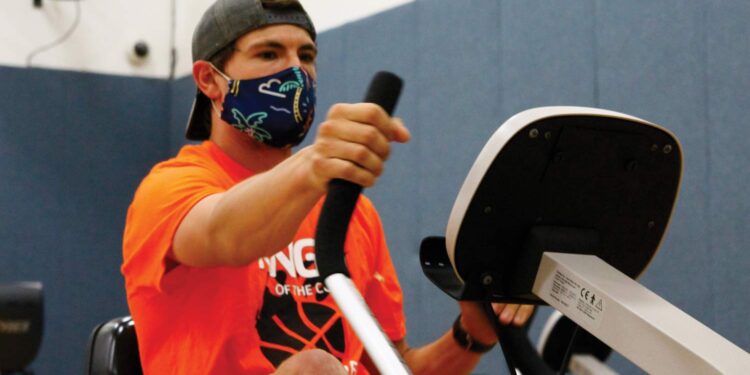Two YMCAs share continuing education strategies and 2021 fitness trends and predictions.
The pandemic has changed the way many fitness enthusiasts think about exercising, and you will likely see this throughout the year in your facilities and classes. As such, it’s important to stay aware of current and future trends in the industry to best serve your members.
Staying Current with Resources and Personal Experience
Kathy Fielding, the CEO of the North Suburban YMCA (NSYMCA) in Northbrook, Illinois, said her team is always looking to see what’s coming next through webinars, fitness podcasts, blogs and magazines, and Facebook fitness groups.
“History has taught us we have to balance the short-lived, gimmicky fitness trends — the ones that require the newest, most expensive equipment — with the trends our members ask for, benefit from and love,” said Fielding. “We’ve discovered some of the ‘latest and greatest’ trends can confuse and discourage members, and many of these classes are designed to feel exclusive.”
To combat this discouragement, Fielding and her team design programs to provide a safe, welcoming and inclusive environment that inspires members to feel successful in their individual wellness programs. “We encourage our members to find a workout they enjoy, regardless of what the trends may say,” said Megan Vazquez, the senior director of wellness at the NSYMCA. “In addition, we survey our participants and community partners, using them as focus groups to make sure we are serving our members’ needs.”
For Sarah Johnson, the association director of group exercise for the YMCA of Metropolitan Washington in Washington, D.C., staying up-to-date is all about research, specifically through personal experiences. “Right before COVID-19, we saw a huge boom in the boutique experience which created a niche experience for the user,” said Johnson. “Many were waiting for when that boutique bubble might burst, but what we saw was the boutiques adapting and expanding, too.”
For example, SoulCycle started offering classes off the bike at some of their studios and through their at-home streaming service. Noticing this niche programming opportunity, Johnson said she regularly used free trials to experience the classes herself. This way, she could speak on the class, how it made her feel, the structure and the impact the teaching, program and space had on the participant and class as a whole.
In addition, Johnson also utilizes peer connection to not only learn about new equipment and upcoming trends, but to embrace supporting and lifting others up to succeed as well.
What to Expect: How Programming will Change Throughout the Year
Over the last several months, Fielding said they’ve noticed a large shift in their members and instructors preferring to do personal training and take fitness classes outside — something the community was never interested in prior to the pandemic. Additionally, the launch of the Virtual Y has enabled the NSYMCA team to take programming beyond the walls of their facility and make it convenient for members to continue their wellness journey at home, all while still connecting with other members.
The Virtual Y includes fitness, meditation, adult education, art, dance and even equipment rentals. “Although this initiative was started because of the pandemic, we know it will continue because it’s ideal for seniors, people who travel and for our snowbirds who love their favorite instructors but can’t make it to a gym,” said Vazquez. “With virtual memberships, the NSYMCA also benefits from a new revenue stream including working with the corporate community to offer a virtual wellness option for their employees.”
Johnson also sees virtual being a key component of future fitness programming — specifically riding on the word versatility as many organizations did not have virtual programming prior to the pandemic, but in one way or another, they do now.
“This year has forced the wellness industry to move deeper into and embrace the world of technology like never before, showing participants they have a choice,” said Johnson. “The wellness industry will have to be able to offer their members both virtual options from apps, streaming services or social media platforms, as well as in-person options. Creating an experience for everyone’s comfort level in terms of participation will be key.”
In addition to the virtual component, Johnson also predicts an increase in wearables when it comes to 2021 fitness trends. Being able to monitor progress and connect with others will be a useful tool for motivation.
Overall, Fielding, Vazquez and Johnson all predict connection and a return to community as the future of fitness programming. “As much as people may have utilized an app or streamed their favorite instructor, people still miss that live instructor or personal trainer who’s seeing and reacting to their form in class and is able to provide on the spot corrections or motivations,” said Johnson. “Participants will want to receive that instruction again in real time to make sure everything they’ve been doing at home is correct.”










